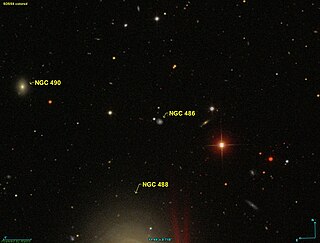
Aerodynamics, from Greek ἀήρ aero (air) + δυναμική (dynamics), is the study of motion of air, particularly when affected by a solid object, such as an airplane wing. It is a sub-field of fluid dynamics and gas dynamics, and many aspects of aerodynamics theory are common to these fields. The term aerodynamics is often used synonymously with gas dynamics, the difference being that "gas dynamics" applies to the study of the motion of all gases, and is not limited to air. The formal study of aerodynamics began in the modern sense in the eighteenth century, although observations of fundamental concepts such as aerodynamic drag were recorded much earlier. Most of the early efforts in aerodynamics were directed toward achieving heavier-than-air flight, which was first demonstrated by Otto Lilienthal in 1891. Since then, the use of aerodynamics through mathematical analysis, empirical approximations, wind tunnel experimentation, and computer simulations has formed a rational basis for the development of heavier-than-air flight and a number of other technologies. Recent work in aerodynamics has focused on issues related to compressible flow, turbulence, and boundary layers and has become increasingly computational in nature.
IA-32 is the 32-bit version of the x86 instruction set architecture, designed by Intel and first implemented in the 80386 microprocessor in 1985. IA-32 is the first incarnation of x86 that supports 32-bit computing; as a result, the "IA-32" term may be used as a metonym to refer to all x86 versions that support 32-bit computing.

The Intel 486, officially named i486 and also known as 80486, is a higher-performance follow-up to the Intel 386 microprocessor. The i486 was introduced in 1989 and was the first tightly pipelined x86 design as well as the first x86 chip to use more than a million transistors, due to a large on-chip cache and an integrated floating-point unit. It represents a fourth generation of binary compatible CPUs since the original 8086 of 1978.
The number of the beast, 666 in most manuscripts, is associated with the Beast of Revelation in the Book of Revelation in the Bible.
Artabanus may refer to various rulers/monarchs of ancient Persia & Parthia:

The British Rail Class 485 and British Rail Class 486 electrical multiple units were originally built for the London Electric Railway from 1923-31 as its 'Standard' tube stock. They were purchased by British Rail in 1967 and transported to the Isle of Wight to work 'mainline' services on the newly electrified Ryde to Shanklin line, where they worked for an additional quarter of a century. At the time of their purchase the units had already worked for over 40 years on the London Underground, but their introduction allowed the last steam locomotives on the line to be withdrawn.
The Bayer designation Chi Sagittarii (χ Sagittarii) is shared by three star systems in the zodiac constellation of Sagittarius. The brightest of these, χ1 Sagittarii and χ3 Sagittarii, are separated by 0.56° on the sky. The dimmer star χ2 Sagittarii is located between them, 0.10° from χ1, and is too faint to be seen with the naked eye. In 1977, the Wow! signal came from the direction of these stars.
Shor is the Hebrew word for bull or ox. Shor may also refer to:

NGC 486, also occasionally referred to as LEDA 1281966 or GC 275, is a spiral galaxy in the constellation Pisces. NGC 486 was discovered on December 6, 1850 by Irish engineer Bindon Blood Stoney.
486 Squadron or 486th Squadron may refer to:
Moose Range may refer to:
This page is based on this
Wikipedia article Text is available under the
CC BY-SA 4.0 license; additional terms may apply.
Images, videos and audio are available under their respective licenses.



